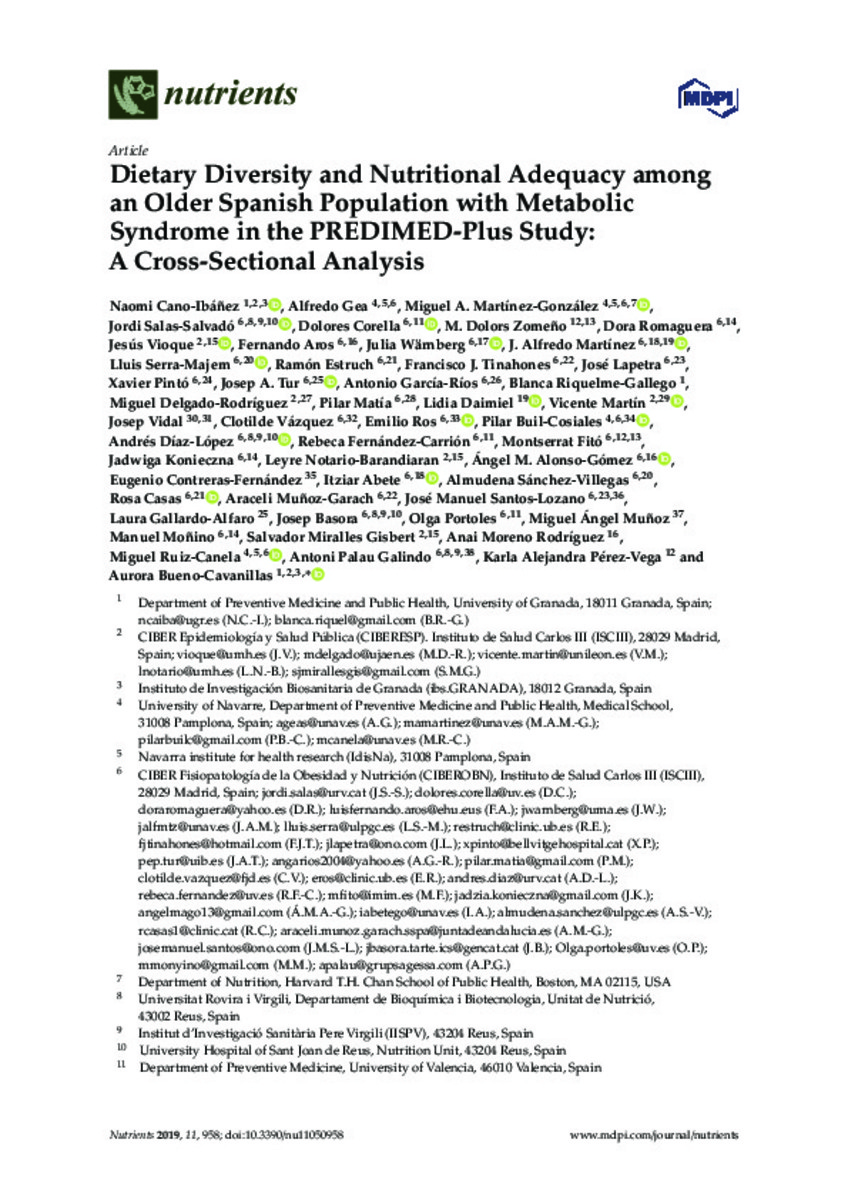Dietary diversity and nutritional adequacy among an older Spanish population with Metabolic Syndrome in the PREDIMED-Plus study: a cross-sectional analysis
Palabras clave :
Dietary diversity
Nutrient adequacy
Metabolic syndrome
Aging
Premides-plus study
Fecha de publicación :
2019
Nota:
This is an open access article distributed under the Creative Commons: Atribution License (cc BY)
Cita:
Cano-Ibañez, N. (Naomi); Gea, A. (Alfredo); Martinez-Gonzalez, M.A. (Miguel Ángel); et al. "Dietary diversity and nutritional adequacy among an older Spanish population with Metabolic Syndrome in the PREDIMED-Plus study: a cross-sectional analysis". . 11 (5), 2019, 958
Aparece en las colecciones:
Estadísticas e impacto
0 citas en

0 citas en

Los ítems de Dadun están protegidos por copyright, con todos los derechos reservados, a menos que se indique lo contrario.








